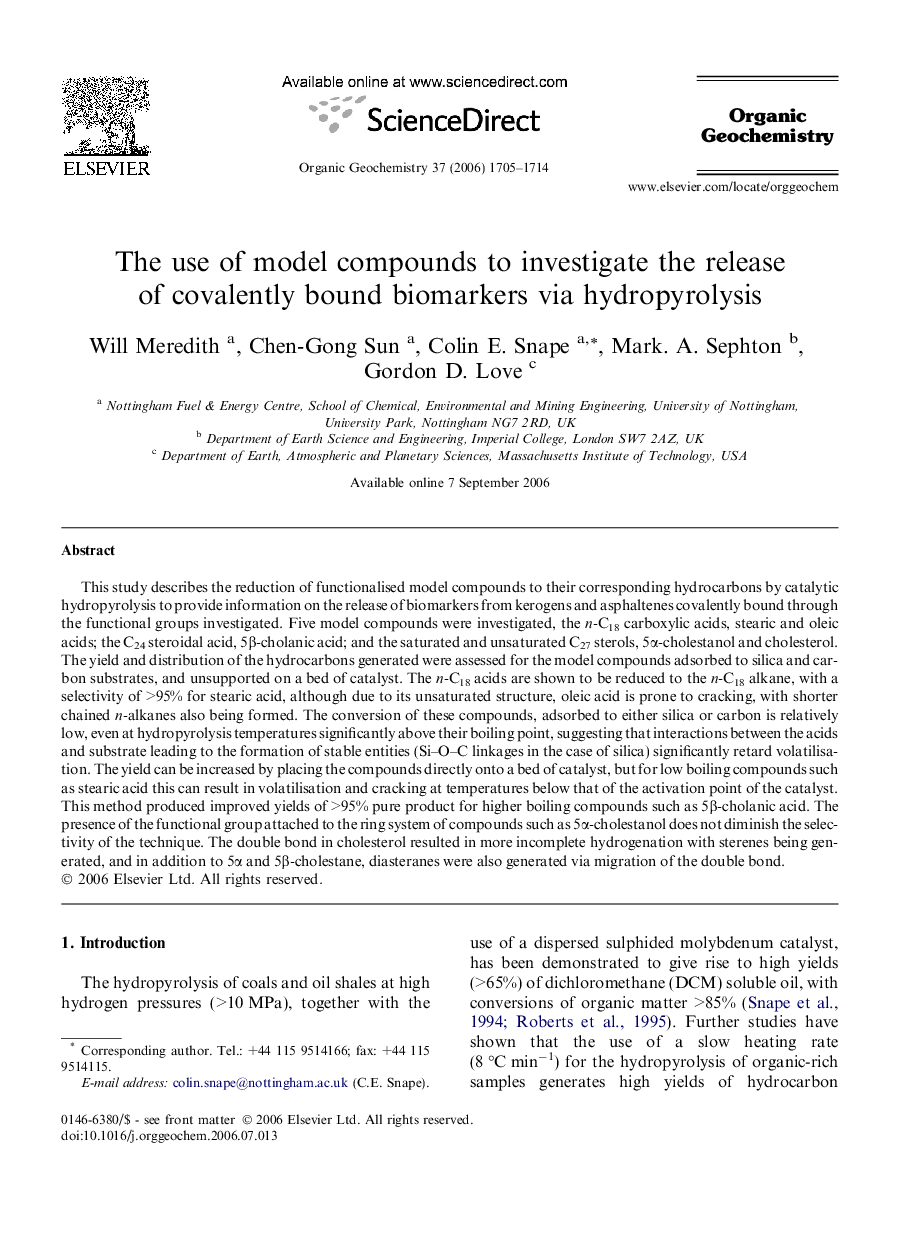| کد مقاله | کد نشریه | سال انتشار | مقاله انگلیسی | نسخه تمام متن |
|---|---|---|---|---|
| 5162968 | 1379763 | 2006 | 10 صفحه PDF | دانلود رایگان |
عنوان انگلیسی مقاله ISI
The use of model compounds to investigate the release of covalently bound biomarkers via hydropyrolysis
دانلود مقاله + سفارش ترجمه
دانلود مقاله ISI انگلیسی
رایگان برای ایرانیان
موضوعات مرتبط
مهندسی و علوم پایه
شیمی
شیمی آلی
پیش نمایش صفحه اول مقاله

چکیده انگلیسی
This study describes the reduction of functionalised model compounds to their corresponding hydrocarbons by catalytic hydropyrolysis to provide information on the release of biomarkers from kerogens and asphaltenes covalently bound through the functional groups investigated. Five model compounds were investigated, the n-C18 carboxylic acids, stearic and oleic acids; the C24 steroidal acid, 5β-cholanic acid; and the saturated and unsaturated C27 sterols, 5α-cholestanol and cholesterol. The yield and distribution of the hydrocarbons generated were assessed for the model compounds adsorbed to silica and carbon substrates, and unsupported on a bed of catalyst. The n-C18 acids are shown to be reduced to the n-C18 alkane, with a selectivity of >95% for stearic acid, although due to its unsaturated structure, oleic acid is prone to cracking, with shorter chained n-alkanes also being formed. The conversion of these compounds, adsorbed to either silica or carbon is relatively low, even at hydropyrolysis temperatures significantly above their boiling point, suggesting that interactions between the acids and substrate leading to the formation of stable entities (Si-O-C linkages in the case of silica) significantly retard volatilisation. The yield can be increased by placing the compounds directly onto a bed of catalyst, but for low boiling compounds such as stearic acid this can result in volatilisation and cracking at temperatures below that of the activation point of the catalyst. This method produced improved yields of >95% pure product for higher boiling compounds such as 5β-cholanic acid. The presence of the functional group attached to the ring system of compounds such as 5α-cholestanol does not diminish the selectivity of the technique. The double bond in cholesterol resulted in more incomplete hydrogenation with sterenes being generated, and in addition to 5α and 5β-cholestane, diasteranes were also generated via migration of the double bond.
ناشر
Database: Elsevier - ScienceDirect (ساینس دایرکت)
Journal: Organic Geochemistry - Volume 37, Issue 12, December 2006, Pages 1705-1714
Journal: Organic Geochemistry - Volume 37, Issue 12, December 2006, Pages 1705-1714
نویسندگان
Will Meredith, Chen-Gong Sun, Colin E. Snape, Mark. A. Sephton, Gordon D. Love,